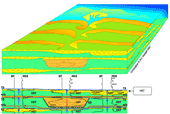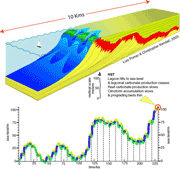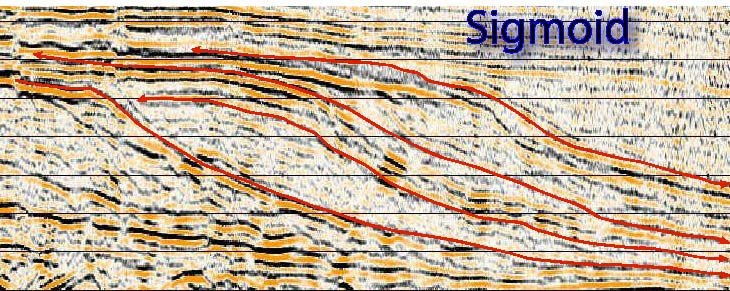|




|
A prograding clinoform pattern formed by a number of superposed sigmoid (s-shaped) reflections interpreted as strata with thin, gently dipping upper and lower segments, and thicker, more steeply dipping middle segments. The upper (topset) segments of the strata approach horizontality or have very low angles or dip, and are concordant with the upper surface of the facies unit (Mitchum, AAPG Memoir 26).

The "sigmoid" (Pomar, 1991) is also considered to be basic accretional unit or building block of the margin of the progradational upper Miocene reef complex (the Llucmajor platform) formed during a third-order sea-level highstand (Pomar and Ward, 1994).
Click on the movie to the right to see the sigmoids stack into progressively larger-scale accretional units of sets, cosets, and megasets of sigmoids, which reflect hierarchical orders of sea level cycles. Estimated amplitudes of these cycles are less than 15 m, 20–30 m, 60–70 m, and about 100 m, respectively, and are thought to be glacioeustatic in origin (Pomar, 1991). Each of these accretional units, which represent high-frequency depositional sequences (seventh to fourth order), have similar characteristic stratal geometries, boundaries, and facies architecture.
Click on the lowest thumbnail to view sigmoids composed of horizontal lagoonal beds passing basinward into reef-core lithofacies with sigmoidal bedding, then into forereef- slope clinoform beds, and then into flat-lying openshelf (or shallow-basin) beds. For the lagoonal and reef-core units, boundaries are erosion surfaces (submarine and subaerial), which pass basinward into correlative conformities.
|